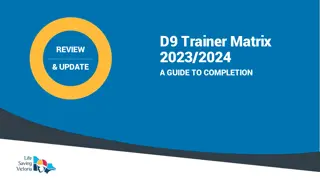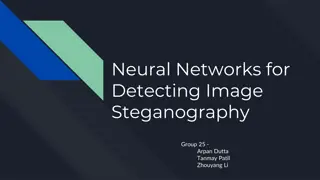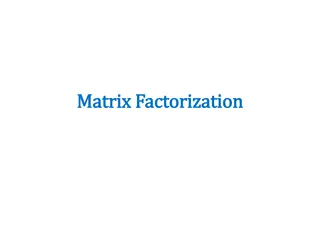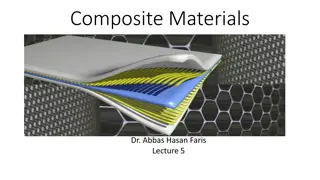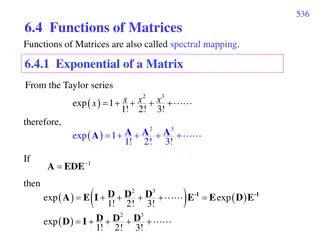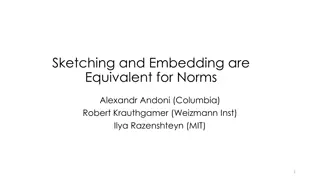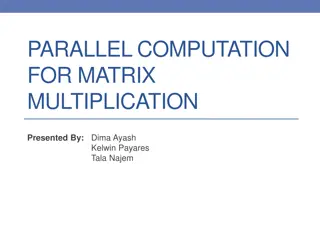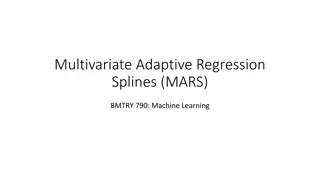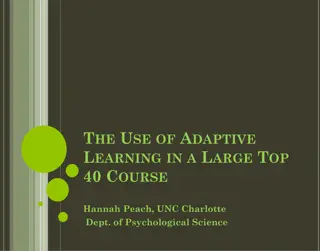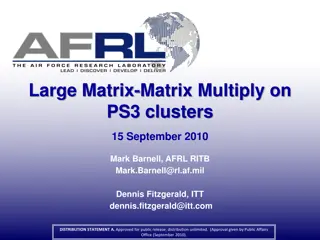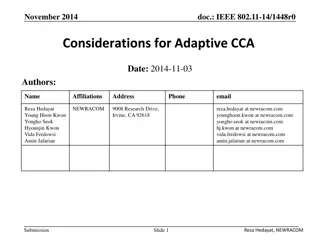
Approach to Adaptive Steganography Using Matrix Embedding
Explore an innovative approach to adaptive steganography based on matrix embedding techniques, maximizing embedding capacity while maintaining visual imperceptibility. The method leverages Hamming codes for efficient embedding, with a focus on human visual sensitivity for increased capacity. Learn about the Weber-Fechner law's role in enhancing the embedding process and achieving an optimal trade-off between capacity and distortion.
Download Presentation

Please find below an Image/Link to download the presentation.
The content on the website is provided AS IS for your information and personal use only. It may not be sold, licensed, or shared on other websites without obtaining consent from the author. If you encounter any issues during the download, it is possible that the publisher has removed the file from their server.
You are allowed to download the files provided on this website for personal or commercial use, subject to the condition that they are used lawfully. All files are the property of their respective owners.
The content on the website is provided AS IS for your information and personal use only. It may not be sold, licensed, or shared on other websites without obtaining consent from the author.
E N D
Presentation Transcript
TENCON 2007 - 2007 IEEE Region 10 Conference 1 An Approach to Adaptive Steganography Based on Matrix Embedding 2007 Santosh Arjun, Atul Negi, Chaithanya Kranthi, Divya Keerthi Student: Presentation Date:2014/01/21
Outline Introduction Adaptive steganography methods a review Proposed method Experimentation and results Conclusions Reference 2
Introduction As to maximize the embedding capacity while maintaining good embedding efficiency, we make use of Weber-Fechner law to represent the response of a human eye, such that the embedding process is visually imperceptible giving optimum trade-off between embedding capacity and distortion to the image. 3
Adaptive steganography methods a review To improve the statistical undetectability [6] had suggested the use of matrix embedding for the existing methods. Propose a new method of adaptive steganography which uses matrix embedding and also exploits the human visual sensitivity for increasing the embedding capacity. 4
Proposed method Use hamming codes for matrix embedding. Hamming code is a linear error-correcting code named after its inventor, Richard Hamming. To encode k bits of message word into an n bits code sequence with only a single modification n should be equal to (2k-1). 5
Hamming codes For each integer r 2 there is a code with block length n=2r-1 and message length k=2r-r-1. Hence the rate of Hamming codes is R=k/n=1 -r / (2r-1), which is highest possible for codes with distance 3. (7,4) Hamming Code: r=3, block length n=7, message length k=4, R=4/7 Hamming Code 6
Proposed method The change density D(k) is defined as the number of modifications needed per code sequence of length n, to embed a k bit message. Embedding rate R(k) is defined as ratio. 7
Proposed method Weber-Fechner Law: Where B1, B2 are two luminance levels and S is the incremental visual sensation due to them. The contrast in a picture or scene is expressed as a ratio of the maximum to minimum luminance Bmax/Bmin. [ ] - -Weber Fechner law Weber-Fechner 8
Proposed method Embedding Algorithm Input: Cover Image Output: Stego-Image. Step 1: Read the cover Image. Step 2: First a 3 3 block is moved over the cover image centered at location (x,y). If all the pixel values under the block in c(x,y) are the same, then the pixels of that block are not used for message embedding. All the remaining pixels of c(x,y) are modified in the following way. 9
Proposed method Embedding Algorithm Input: Cover Image Output: Stego-Image. Step 3: Take n bits from the M th LSB bit plane and k bits from message to be embedded. (for values of (k,n), refer to tables 2 and 3). Step 4: Message is embedded is using Matrix Embedding. Step 5: If the number of bit places that can embed information are left, go to step 3. Step 6: END 10
Conclusions The proposed method of adaptive steganography makes use of matrix embedding and Weber-Fechner law, giving higher embedding capacity when compared to the existing adaptive steganographic methods. 12
Reference [6] Jessica Fridrich and David Soukal, Matrix Embedding for Large Payloads , IEEE Transactions on Information Forensics and Security, vol.1, no.3, September 2006. [8] R. Crandall, Some notes on steganography , Steganography Mailing List [online] http://os.inf.tu-dresden.de/westfeld/crandall.pdf ,1998.( ) [9] A. Westfeld, High Capacity despite better Steganalysis (F% - a steganographic algorithm), Information Hiding, 4 th Int l wokshop, Newyork, Springer- Verlag, 2001. Vol. 2137, LNCS, pp. 289-302. 13



